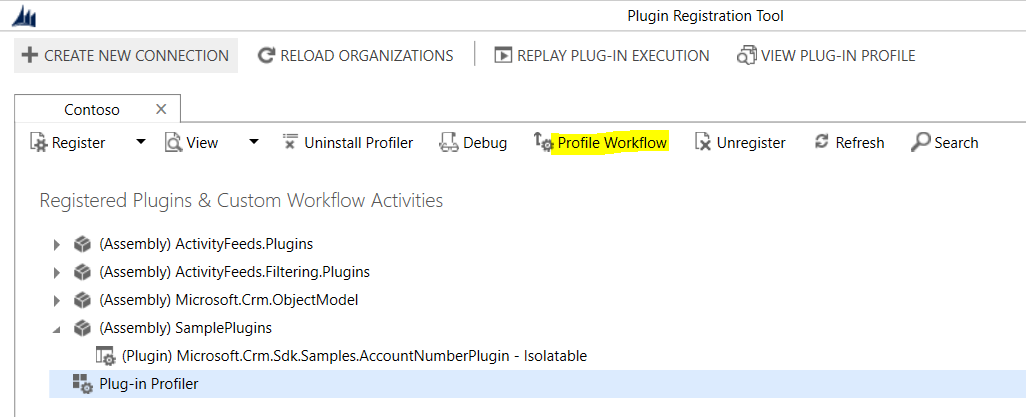

- #PLUGIN REGISTRATION TOOL CRM 2016 DOWNLOAD UPDATE#
- #PLUGIN REGISTRATION TOOL CRM 2016 DOWNLOAD FULL#
- #PLUGIN REGISTRATION TOOL CRM 2016 DOWNLOAD DOWNLOAD#
If you have more than one Plugin in your organization, make sure you have the correct one selected! This would be the IPlugin you created in the assembly you registered.

You can leave it on All Attributes if you want your plugin step to run any time any of the record’s attributes are changed.
#PLUGIN REGISTRATION TOOL CRM 2016 DOWNLOAD UPDATE#
This configuration is not available on all message (For example, it would not make sense to filter attributes on Create) and is most commonly used in 1Staff in the Update message. If you only want your plugin step to run when certain attributes of the entity are changed, you would specify them here. These two methods were extensively used in Dynamics CRM 4.0, but they were deprecated from Dynamics CRM 2011 onwards although you can still use them in 20.

This configuration is only used for the SetRelated and RemoveRelated messages. You can leave it blank to make the step run when any entity goes through the message you provided in step 1. This is the main entity that your plugin will run against. For example, Win is only available for Opportunties and Quotes. Note that not every message will be available for every entity.
#PLUGIN REGISTRATION TOOL CRM 2016 DOWNLOAD FULL#
Common ones are Create, Update, Delete, Assign, and Associate, but you can see the full list here: The first thing you should determine when registering a step is what message you want your plugin to run under. I have labeled every configuration item and describe them in detail below. Here is the window displayed when registering a new step using the Plugin Registration Tool provided in the CRM SDK. Today I will be going over in detail each part of the Plugin Registration tool’s configuration options for registering a new step. Something to keep in mind when you have Composite fields on the form.

Updating the address information, either through a SQL update or through the API, allowed the contact to be reactivated. We found that any contact that had remaining address information over this maximum could not be activated. Well, recently the client reduce the length of the address line 1 field (address1_line1) to a max of 22 characters through customization. So their address lines, city, state, zip, etc. On the contact form there was a Composite field for the contact’s address information. Very strange!Īfter some poking around, we discovered the cause of the problem. And removing all script from the forms didn’t solve the issue. It also only happened for some contacts, not all of them. This time, there was no error message, but the form never updated. Normally when a user clicks Activate on the contact form, they are displayed with a prompt that confirms the reactivation, then the form is updated into an “activated” state or there is an error message displayed. Recently we had a client that was unable to reactivate contacts. You should now be able to edit the filter criteria and add related entities.Save the customizations.xml and re-add it back into the solution.Find the view in the XML that you want to unlock.
#PLUGIN REGISTRATION TOOL CRM 2016 DOWNLOAD DOWNLOAD#
Export the solution as unmanaged, download and save.Add the entity to the solution (In CRM 2016, you have the option to only add the specific view – do this if available, as it will speed up the import).Here’s what you need to do if you run into the same issue: We suspect the cause was because this View has been around since the Ancient Days of CRM 4, which may not have had these features available, but we cannot say for sure. Well, we aren’t really sure why this was, but we were able to do a small tweak to an exported solution’s xml to bring these back for this view. (An astute observer will also notice that the “Edit Filter Criteria” task in the underlying window on the right is also missing.) Normally this is a straightforward process, you go to customizations, open the entity, then the associated view, choose Add Columns, and choose the entity at the time. Recently we had a client ask how they could edit the Associated View of an Entity in our solution so that columns from related entities are displayed.


 0 kommentar(er)
0 kommentar(er)
